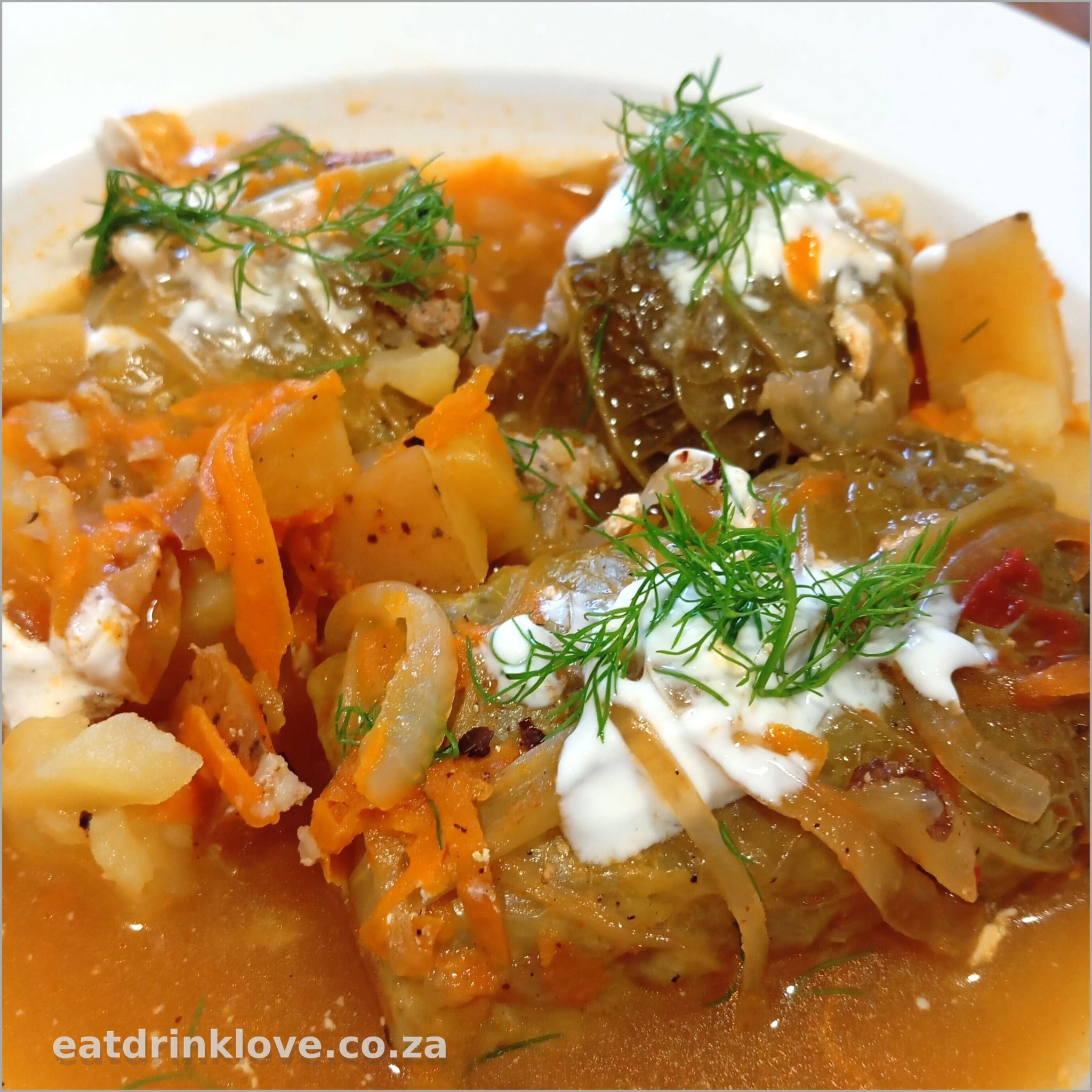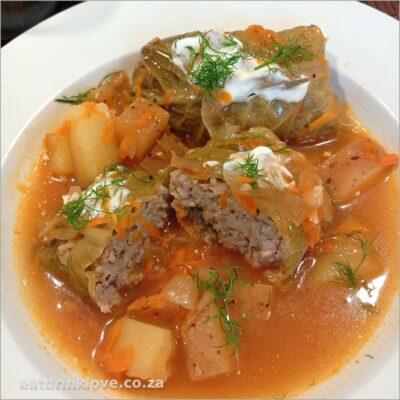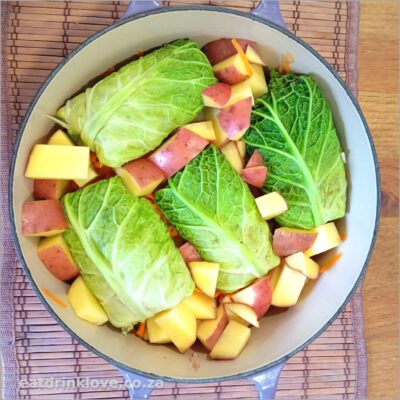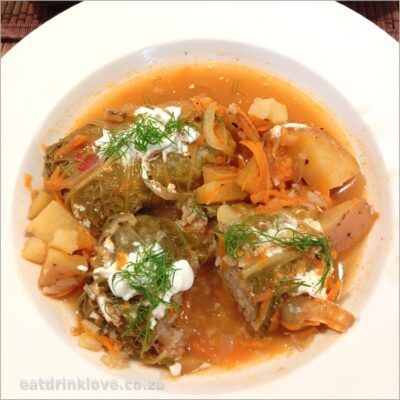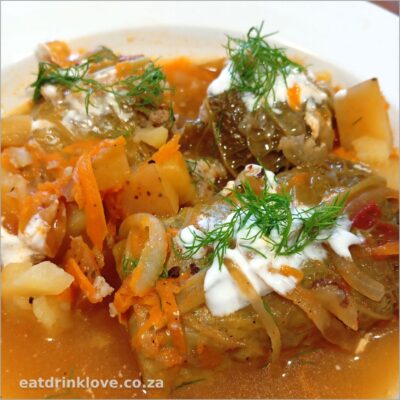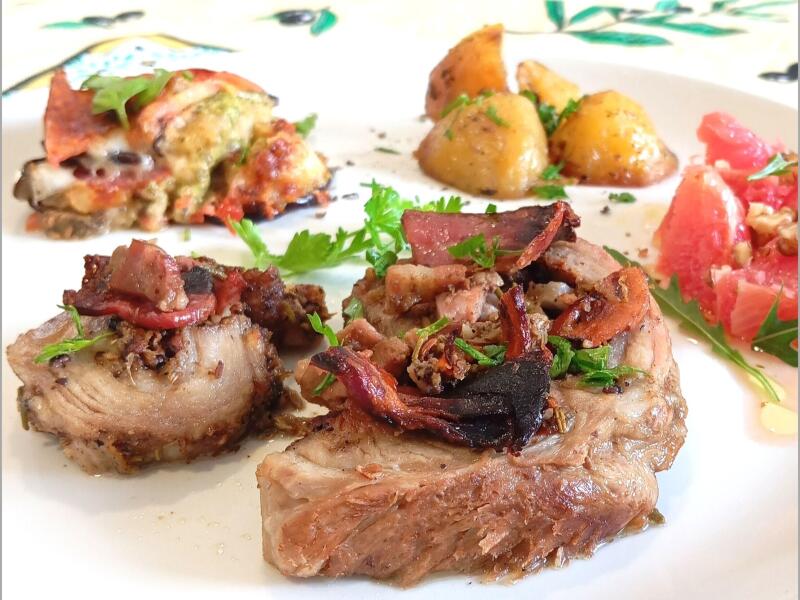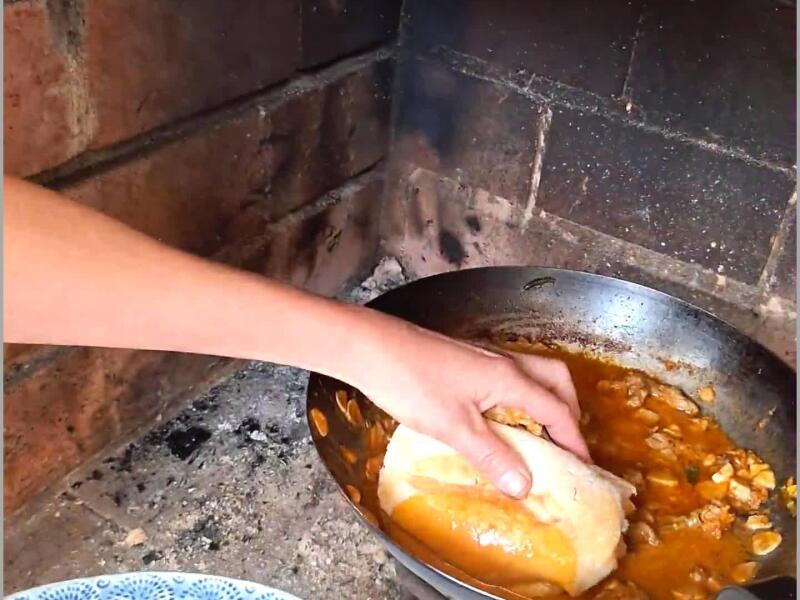Balandėliai, or Lithuanian cabbage rolls, is a comforting dish that combines tender cabbage leaves with a savoury pork and rice filling, simmered in a rich, tangy broth. Perfect for family gatherings or a cosy dinner, this traditional recipe brings warmth and flavour to the table, showcasing Lithuania’s love for hearty, home-cooked meals.
This recipe was adapted from the one found on Taste of Lithuania.
Ingredients
- 1 large green or white cabbage head
- 500g ground pork
- 250ml cooked rice
- 1 tsp salt
- 1/2 tsp freshly ground black pepper
- 1 tsp dried dill
- 1 tsp caraway seeds, lightly toasted
- 1 small onion, finely chopped and sautéed
- 2 medium carrots, coarsely grated
- 1 medium onion, thinly sliced
- 2 large potatoes, peeled and cut into 2cm cubes
- 500ml high-quality chicken stock
- 2 Tbsp tomato paste
- 2 Tbsp sour cream, plus extra for serving
Method
Prepare the Cabbage Leaves
- Remove any damaged outer leaves from the cabbage and rinse it thoroughly.
- Place the cabbage, core side down, in a large pot. Pour boiling water over it to cover at least two-thirds of the head.
- Simmer for 8–10 minutes, then carefully turn the cabbage over. Gently separate the softened leaves from the core using a knife and tongs, placing them in a bowl.
- Continue simmering and removing leaves every few minutes until they become too small to roll (reserve smaller leaves for another use).
- Trim the thick central vein from each leaf by slicing it flat with a knife to ensure even thickness for rolling.
Make the Pork Filling
- In a large mixing bowl, combine the ground pork, cooked rice, sautéed onion, dried dill, toasted caraway seeds, salt, and black pepper.
- Mix thoroughly until all ingredients are evenly incorporated.
Assemble the Rolls
- Lay a cabbage leaf flat, smoother side down. Place 2-3 tablespoons of the pork filling near the base of the leaf.
- Fold the bottom of the leaf over the filling, tuck in the sides, and roll tightly to form a neat parcel. Repeat with the remaining leaves and filling.
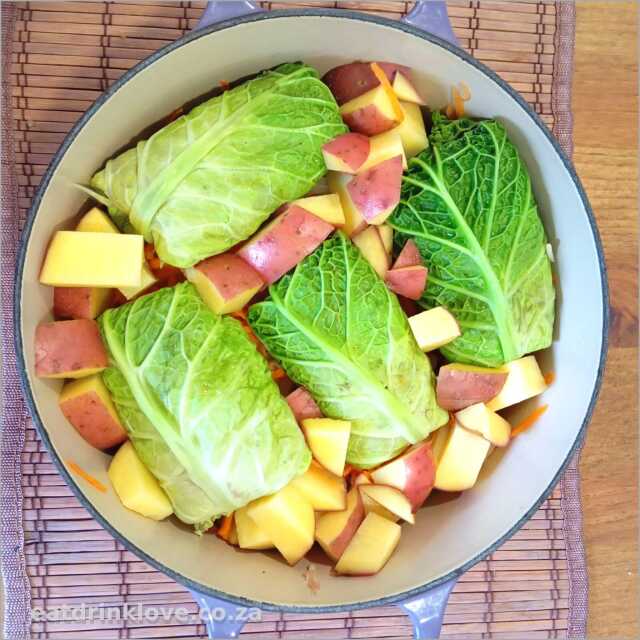
Layer and Cook
- In a large, heavy-bottomed pot, spread one-third of the grated carrots and sliced onion across the bottom.
- Arrange a layer of cabbage rolls, seam side down, and scatter potato cubes to fill any gaps.
- Add another layer of one-third of the carrots and onions, followed by another layer of cabbage rolls and potatoes. Top with the remaining carrots and onions.
- In a bowl, whisk the chicken stock with the tomato paste until smooth. Pour this mixture over the rolls, ensuring they are about two-thirds submerged.
- Dot the top with small spoonfuls of sour cream.
- Cover the pot, bring to a boil over medium-high heat, then reduce to low and simmer gently for 60 minutes, until the cabbage is tender and the flavours meld.
Serve
- Serve the cabbage rolls hot, spooning some of the broth, vegetables, and potatoes alongside. Add a generous dollop of sour cream on top for extra richness.
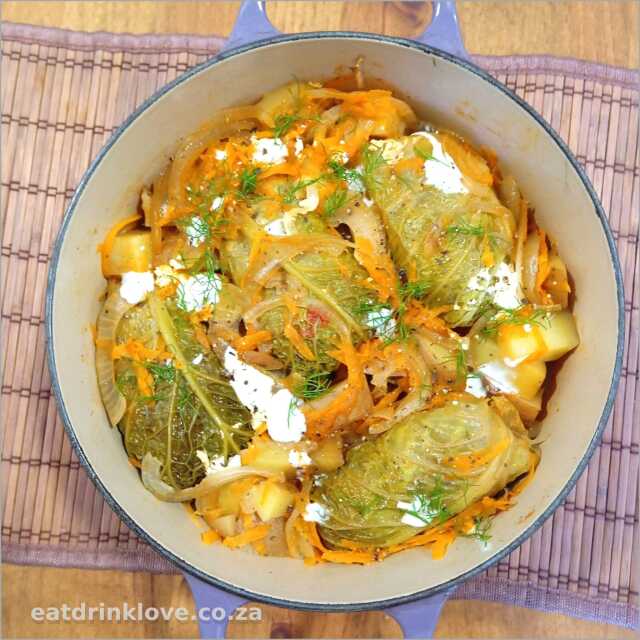
History of Balandėliai
Balandėliai, meaning “little doves” in Lithuanian, is a beloved dish with roots in Eastern European culinary traditions. The name reflects the delicate, rolled shape of the cabbage leaves, resembling small birds. While cabbage rolls appear in many cultures, including Polish (gołąbki) and Ukrainian (holubtsi) cuisines, Lithuania’s version is distinct for its use of caraway seeds and sour cream, which add unique flavour and tanginess. The dish likely originated as a way to use affordable, readily available ingredients like cabbage and pork, making it a staple in rural households. Historically, balandėliai were prepared for festive occasions and family gatherings, symbolising comfort and togetherness. Over time, the recipe has evolved, with variations incorporating different meats or sauces, but the classic Lithuanian preparation remains a cherished part of the country’s culinary heritage.
